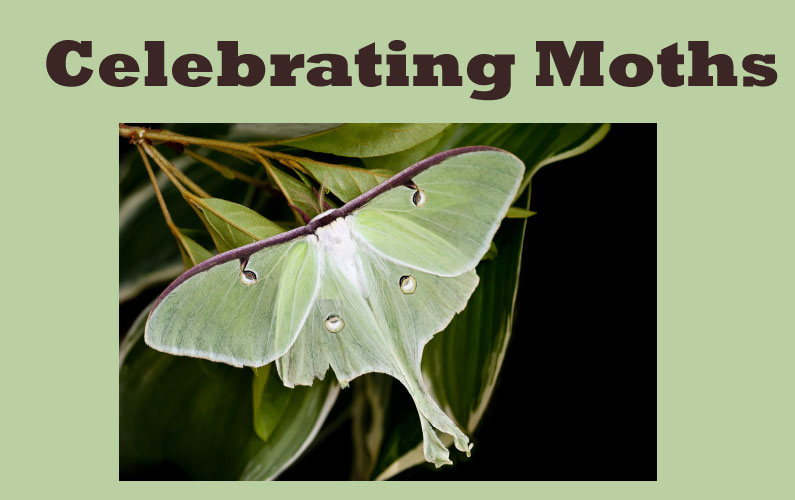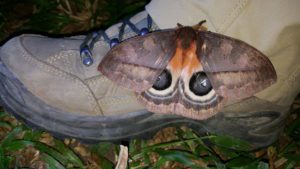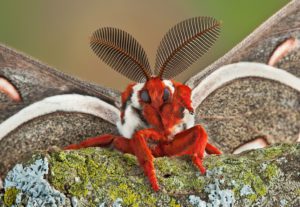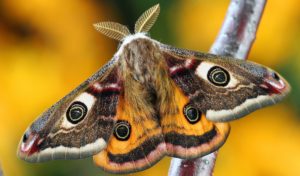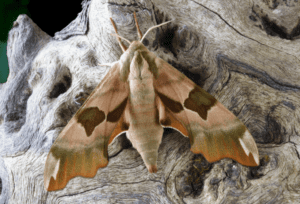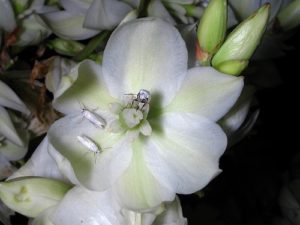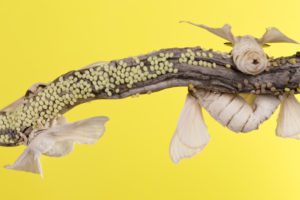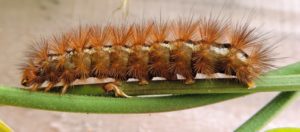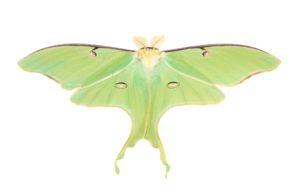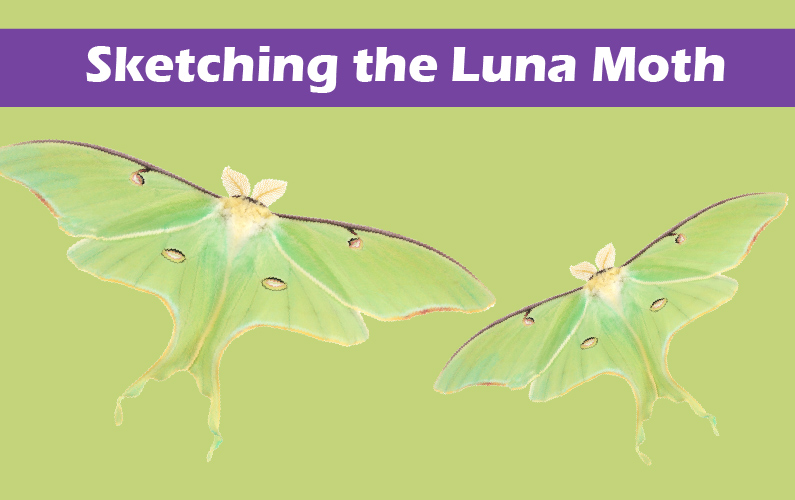Let’s learn some fun facts about moths in celebration of National Moth Week!
Moths don’t get the respect and attention they deserve, overshadowed by their more colorful and day-flying relatives, the butterflies. But there are way more species of moths than butterflies, with scientists estimating that there are between 150,000 and 500,000 species of moths. In fact, they comprise up to 94% of the Lepidoptera order!
Below you’ll learn all about moth biology, moth pollination, their lifecycle, threats, and conservation, and how to tell the difference between moths and butterflies.
How to identify moths
Ways to distinguish between butterflies and moths
As members of the Class Insecta butterflies and moths share the common traits of having three pairs of legs, a segmented body and one pair of antennae. They both belong to the Order Lepidoptera (from the Greek lepis meaning scale and pteron meaning wing) which refers to their unique scale-covered wings. These scales are actually modified hairs. Both have a caterpillar life stage that feeds on leaves and an adult stage that feeds on nectar (though some like the Atlas Moth below do not eat anything as adults, existing only long enough to find a mate).
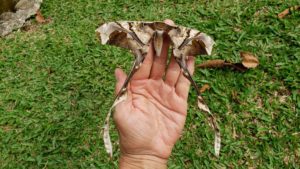

A rare giant silkworm moth I found in Costa Rica
Antennae
One of the easiest ways to tell the difference between moths and butterflies is by looking at their antennae. Moths have larger, feathery or saw-toothed antennae (with the male’s being even larger to catch the scent of the female’s pheromones), while butterflies have skinny antennae that end in a club-like swelling. Some species of moth have skinny antennae, like those of butterflies, but only a very few species end in a club like those of a butterfly do.
Wings
Moths tend to hold their wings horizontally or in a tent-like fashion that shows the tops of their wings and that hides their abdomen. Butterflies tend to hold their wings vertically up over their backs, exposing the dull underside of the wing. Moths are typically smaller with drab-colored wings, although some species are indeed quite large and brightly colored. Butterflies are typically larger and have more colorful patterns on their wings.
Body
The body of a moth is generally stockier and fuzzier, while butterflies are skinnier and lack as much hair. The moth’s body looks larger in proportion to its wings than a butterfly’s and its legs are shorter and stockier too.
Caterpillars
There is no hard and fast rule for distinguishing between the caterpillars of moths and butterflies. But there are guidebooks to help you learn to identify them like Caterpillars; Peterson Field Guide for Young Naturalists. As you can see below, moth caterpillars can be fuzzy or smooth, as can butterflies.
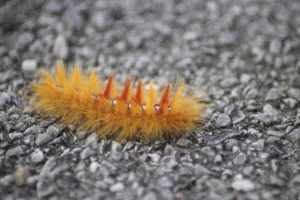

Noctuidae moth caterpillar
Cocoon/Chrysalis
Cocoons and chrysalides are protective coverings for the pupa. The pupa is the intermediate stage between the larva and adult. A moth makes a cocoon, which is wrapped in a soft silk covering or sometimes uses silk to wrap its body in a leaf. A butterfly makes a chrysalis, which is hard, smooth and has no silk covering.
Behavior
Butterflies are primarily diurnal, flying in the daytime. Moths are generally nocturnal, flying at night. However, there are moths that are diurnal, such as the buck moth and there are butterflies that are crepuscular, that is, flying at dawn and dusk.
LEARN MORE ABOUT THE DIFFERENCES BETWEEN MOTHS AND BUTTERFLIES
Important roles moths play in the ecosystem
Moths role as pollinators
Like butterflies, moths play an important role as pollinators of flowering plants, including orchids and cactus to name a few. Nocturnal flowers with pale or white flowers heavy with fragrance and copious dilute nectar are especially attractive to moths. One of the best examples of this mutually beneficial relationship is between yucca moths and yucca plants of the southwestern United States. In fact, their life cycles are so tightly intertwined that neither can live without the services of the other. A great explanation of this relationship is on the U.S. Forest Service website.
Moths role as herbivores and prey
Despite their important role as pollinators, moths can also be major defoliating pests of crops and forest trees so it’s a good thing that they serve as important prey species to both bats and birds.
The Moth Lifecycle
Moths are holometabolous meaning that they undergo a complete metamorphosis from egg to caterpillar and from chrysalis to adult. Here are the stages of a moth’s lifecycle:
- Adult
- Mating
- Egg-laying
- Caterpillar
- Pupae
- Adult
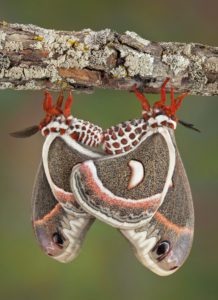

Two Cecropia moths are mating while hanging from a branch. They can stay together for over 12 hours.
Don’t touch that furry caterpillar!
- Some species of moth caterpillars have stinging hairs for protection (up to 600,000!) which can cause irritation to the skin if touched. In extreme cases, they can be very toxic (such as in the genus Lonomia) which in large amounts can cause hemorrhaging, renal failure, and hemolysis. These are collectively called urticating hairs from the Latin urtica meaning “nettle.” Not all hairy caterpillars are hazardous. However, unless the caterpillar is identified as innocuous, don’t handle them; it’s best to err on the side of caution.
- More than 200 species with urticating hairs are distributed throughout the world from tropical to temperate zones. The most infamous stinging caterpillars belong to the families Megalopygidae (flannel moths), Limacodidae (slug caterpillar moths) and Saturnidae.
- These are sticky hairs that break off when a caterpillar feels threatened and can cause a reaction in the form of irritation or even more serious toxic effects. Once I had one of these caterpillars fall on my shoulder and even though I was wearing a shirt, I still felt a stinging sensation through the fabric.
- The hairs can retain potency for many years and may linger on any surface that the caterpillar has touched.
- If you are stung by one of these urticating caterpillars it can be treated:
- Rinse area, but do not scrub, rub, or scratch
- Store clothes in an airtight container and wash separately with HOT water
- Treat the affected area with antihistamine
- Consult a doctor if irritation persists or is extreme
- Here’s a link to photos of 8 of the cutest toxic caterpillars.
More fun facts about moths
- Caterpillars of some species of large moth are used as an important protein source by many indigenous cultures in Asia and Africa.
- It is an old wives’ tale that if you touch a moth or butterfly’s wing and the ‘powder’ rubs off that it will not be able to fly. The powder is actually composed of tiny scales and the insect naturally sheds these scales throughout its lifetime.
- The domestic silkmoth, Bombyx mori is used to make fabric out of their silky cocoons. Silkworms were first domesticated in China over 5,000 years ago.
- Most moths are nocturnal, but some do fly during the day.
- The smallest known moths are from the pygmy moth family (Nepticulidae) with wingspans as small as 3/32 of an inch.
- The largest family of moths are the Saturniidae, with about 2,300 species worldwide, which also curiously enough include the world’s largest moths. The largest known moths are the Atlas moths with wingspans up to 12 inches.
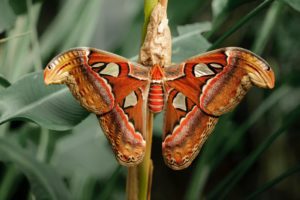


Atlas Moth, world’s largest moth species! Native to China, India, Malaysia, and Indonesia, the moth shares a name with Atlas, the Titan god of Greek mythology.
- One member of the Saturniidae family is the Luna Moth which can spin its “tails” in circles to disorient their bat predators. Here’s an interesting article in Science News about this phenomenon.
Threats faced by moths
- Habitat destruction as land is converted for agriculture and development
- Insecticide/herbicide use, both commercially and residentially
- Climate change is affecting where preferred plants are found and when they are edible
- Light pollution from cities may mess with migratory and mating behavior
How you can help conserve moths
- Grow native flowers, shrubs, and trees in your garden.
- Plant species that provide nectar for moths. These include species that have evolved to be pollinated by moths, they are usually night-blooming and strong-scented. These include Jasmine, Honeysuckle, Evening Primrose, Sweet Rocket and Night-scented Stock and Tobacco.
- Don’t use pesticides. Just don’t. There are plenty of alternatives.
- Keep your yard a little untidy by leaving some areas with fallen leaves and branches for moths to hide and nest in.
- See the Moths Count website for more ideas.
Resources for learning more about moths
- Animal Diversity- Lepidoptera – Information about the Lepidoptera order, which includes butterflies, moths, and skippers.
- Butterflies and Moths of North America – This site includes dynamic distribution maps, photographs, species accounts, and species checklists for each county in the U.S. and each state in Mexico.
- Butterflies and Moths of the World – From the Natural History Museum, London “There are currently an estimated 112,000 to 165,000 described species of butterflies and moths within 131 families.
- Lepidoptera at the Encyclopedia of Life
- National Moth Week – information about moths and events around the country celebrating National Moth Week.


A Saturnid moth I found

Moth Sketching Tutorial
Check out my moth sketching tutorial on this page of my website.

